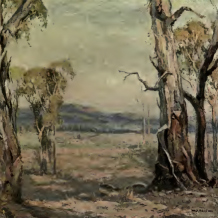Contact zones: Art and Culture in the British Empire, c1851-1900
Overview
'Contact zones', according to Mary Louise Pratt, are the social spaces of colonial encounter were 'disparate cultures meet, clash, and grapple with each other, often in highly asymmetrical relations of domination and subordination.' She argues, however, that a 'contact perspective' also emphasizes how ideas, objects and identities are constituted in and by their relations to each other, emphasizing the importance of co-presence, interaction and interlocking understandings and practices. The notion of the 'contact zone' offers us a radically different way of looking at art produced in nineteenth-century Britain and the British Empire highlighting the connections between artists and art works across the globe. A central question for this course is how we might understand these complex imperial intersections, encounters and appropriations through the visual and the material.
Until very recently, the indelible cultural impact of imperialism on Victorian art has been all but ignored. The central premise of Tim Barringer, Geoff Quilley and Douglas Fordham's introduction to their paradigm-shifting collection of essays, British Art and Empire, is that the concept of empire belongs at the centre, rather than in the margins of the history of British art. 'British art,' they argue, 'has been conceived as work produced in Britain and overwhelmingly representing subjects in the British Isles.' Following on from this, they argue that rather than viewing empire as no more than a theme or form of subject matter in British art, we should conceptualise British art as something in the empire.
Therefore, this course proposes an opening-up of the boundaries of British art in the Victorian period, moving beyond the rigid understanding of 'British art' as something produced within the hermetically sealed boundaries of a small island nation. We will seek to understand the relationship between the visual arts and imperialism in the Victorian period by examining a broad range of media (including painting, drawing, sculpture, photography, printed images etc). A central issue for the course will be an interrogation of the impact of empire on art produced in Britain, as well as on the visual cultures of colonized countries such as India, Australia, South Africa and Canada, thus disrupting the notion of imperial "centres" and colonial "peripheries".
The study of such material raises pressing questions for the discipline of art history and we will draw on a wide range of methodologies from other fields such as anthropology, colonial and postcolonial history, museology, and studies of travel, movement and migration to help us analyse and discuss the wide range of art and ideas encountered in the course.
Reading
Preliminary reading
- Tim Barringer, Geoff Quilley and Douglas Fordham, eds., Art and the British Empire (2007)
- Tim Barringer and Tom Flynn, eds., Colonialism and the Object: Empire, Material Culture and the Museum (1997)
- Felix Driver and David Gilbert (eds), Imperial Cities (1999)
- Catherine Hall, ed., Cultures of Empire: A Reader: Colonizers in Britain and the Empire in the Nineteenth and Twentieth Centuries (2000)
- Catherine Hall and Sonya Rose, eds., At Home with the Empire: Metropolitan Culture and the Imperial World (2006)
- P.J. Marshall, The Cambridge Illustrated History of the British Empire (1996)
- John MacKenzie, Orientalism: History, Theory and the Arts (1995)
- Jonathan Schneer, London 1900: The Imperial Metropolis (1999)
- James Ryan, Picturing Empire: Photography and the Visualisation of the British Empire (1997)
There are also a lot of web resources that will help you to get an idea of the geography, history and politics of British imperialism. Empire Online (accessed through the library catalogue) is particularly helpful and we will use it a lot in the module.

Module information
- Module title
Contact zones: Art and Culture in the British Empire, c1851-1900- Module number
HOA00025M- Convenor
Sarah Turner
For postgraduates
